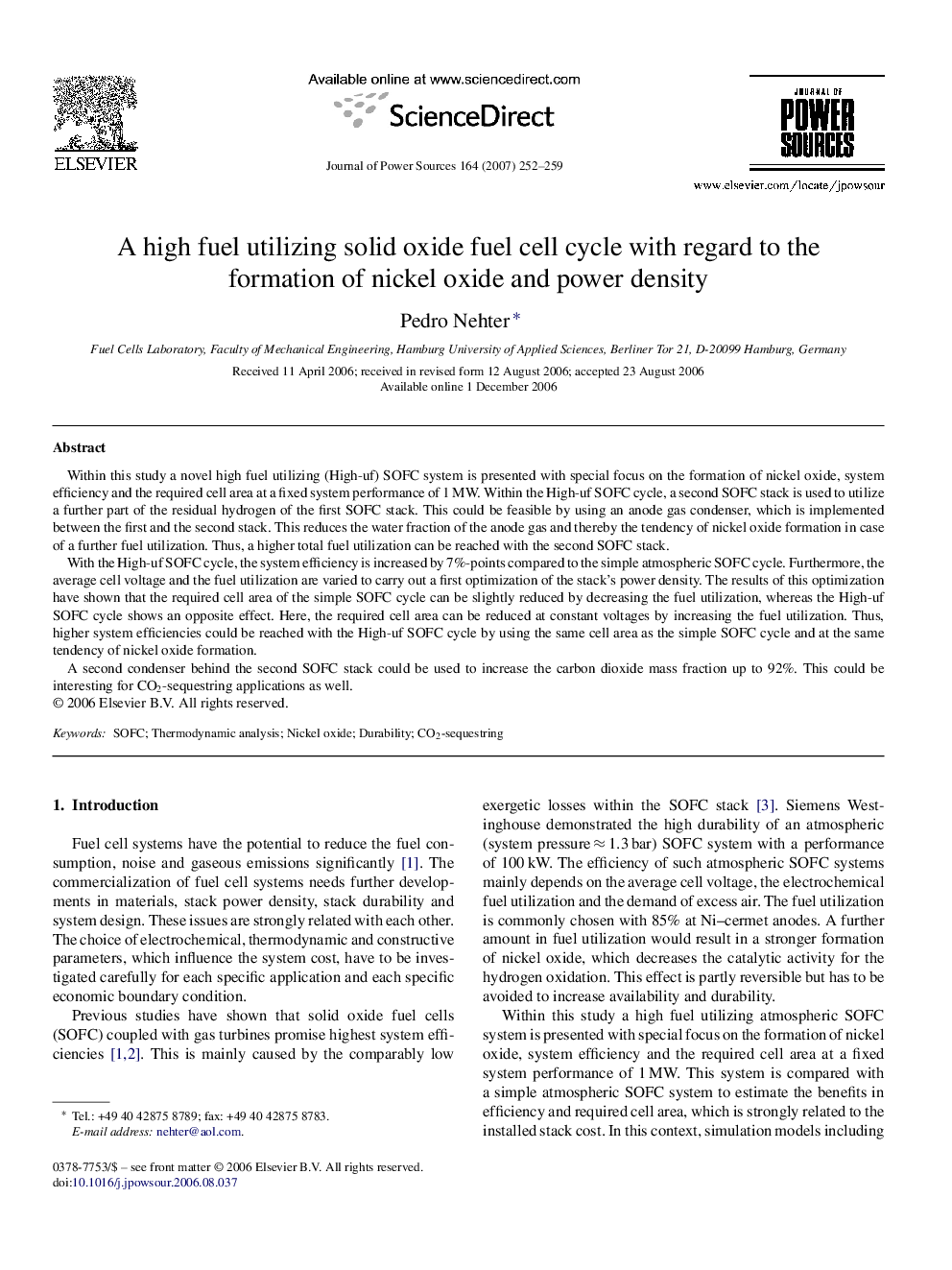| Article ID | Journal | Published Year | Pages | File Type |
|---|---|---|---|---|
| 1291716 | Journal of Power Sources | 2007 | 8 Pages |
Within this study a novel high fuel utilizing (High-uf) SOFC system is presented with special focus on the formation of nickel oxide, system efficiency and the required cell area at a fixed system performance of 1 MW. Within the High-uf SOFC cycle, a second SOFC stack is used to utilize a further part of the residual hydrogen of the first SOFC stack. This could be feasible by using an anode gas condenser, which is implemented between the first and the second stack. This reduces the water fraction of the anode gas and thereby the tendency of nickel oxide formation in case of a further fuel utilization. Thus, a higher total fuel utilization can be reached with the second SOFC stack.With the High-uf SOFC cycle, the system efficiency is increased by 7%-points compared to the simple atmospheric SOFC cycle. Furthermore, the average cell voltage and the fuel utilization are varied to carry out a first optimization of the stack's power density. The results of this optimization have shown that the required cell area of the simple SOFC cycle can be slightly reduced by decreasing the fuel utilization, whereas the High-uf SOFC cycle shows an opposite effect. Here, the required cell area can be reduced at constant voltages by increasing the fuel utilization. Thus, higher system efficiencies could be reached with the High-uf SOFC cycle by using the same cell area as the simple SOFC cycle and at the same tendency of nickel oxide formation.A second condenser behind the second SOFC stack could be used to increase the carbon dioxide mass fraction up to 92%. This could be interesting for CO2-sequestring applications as well.
